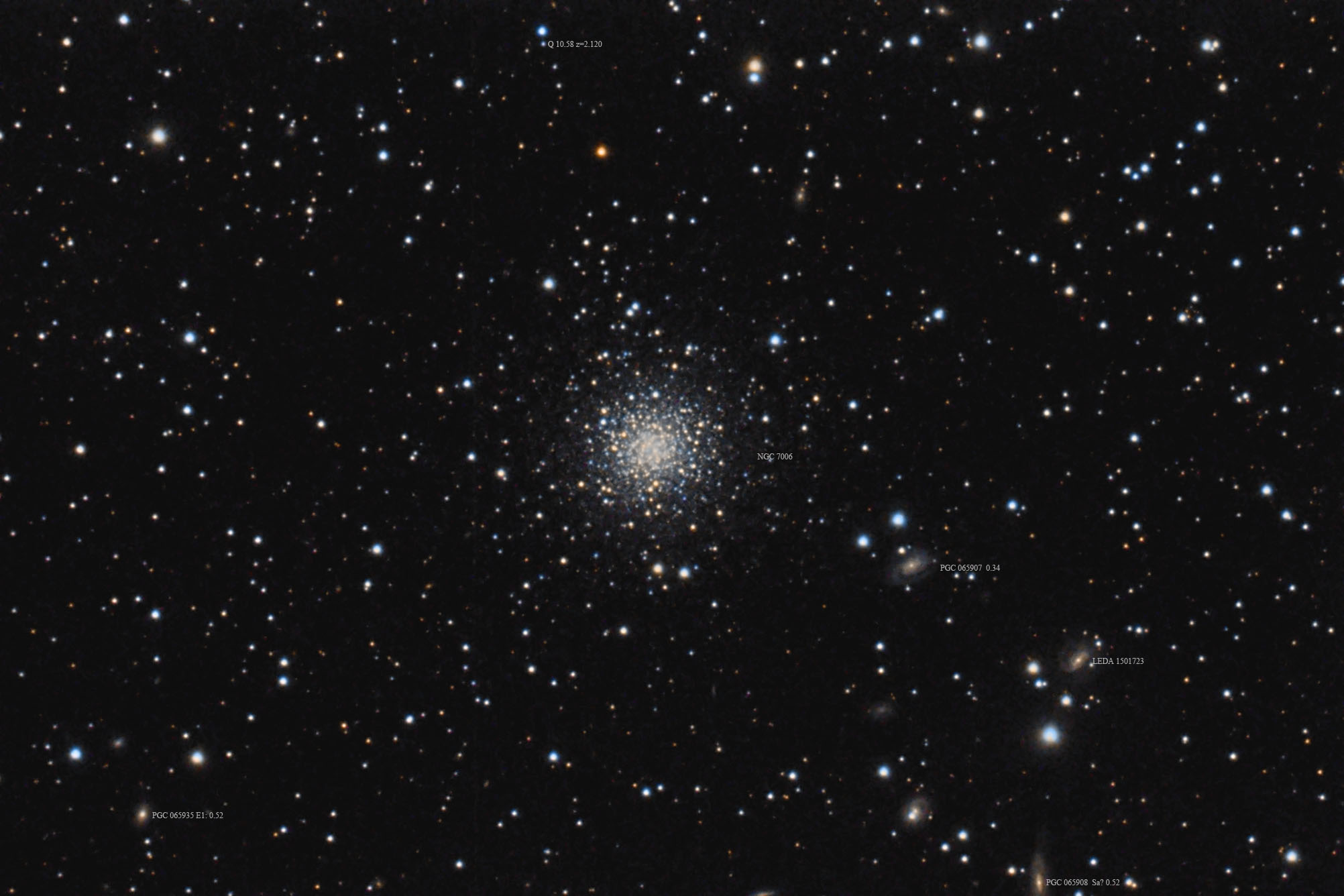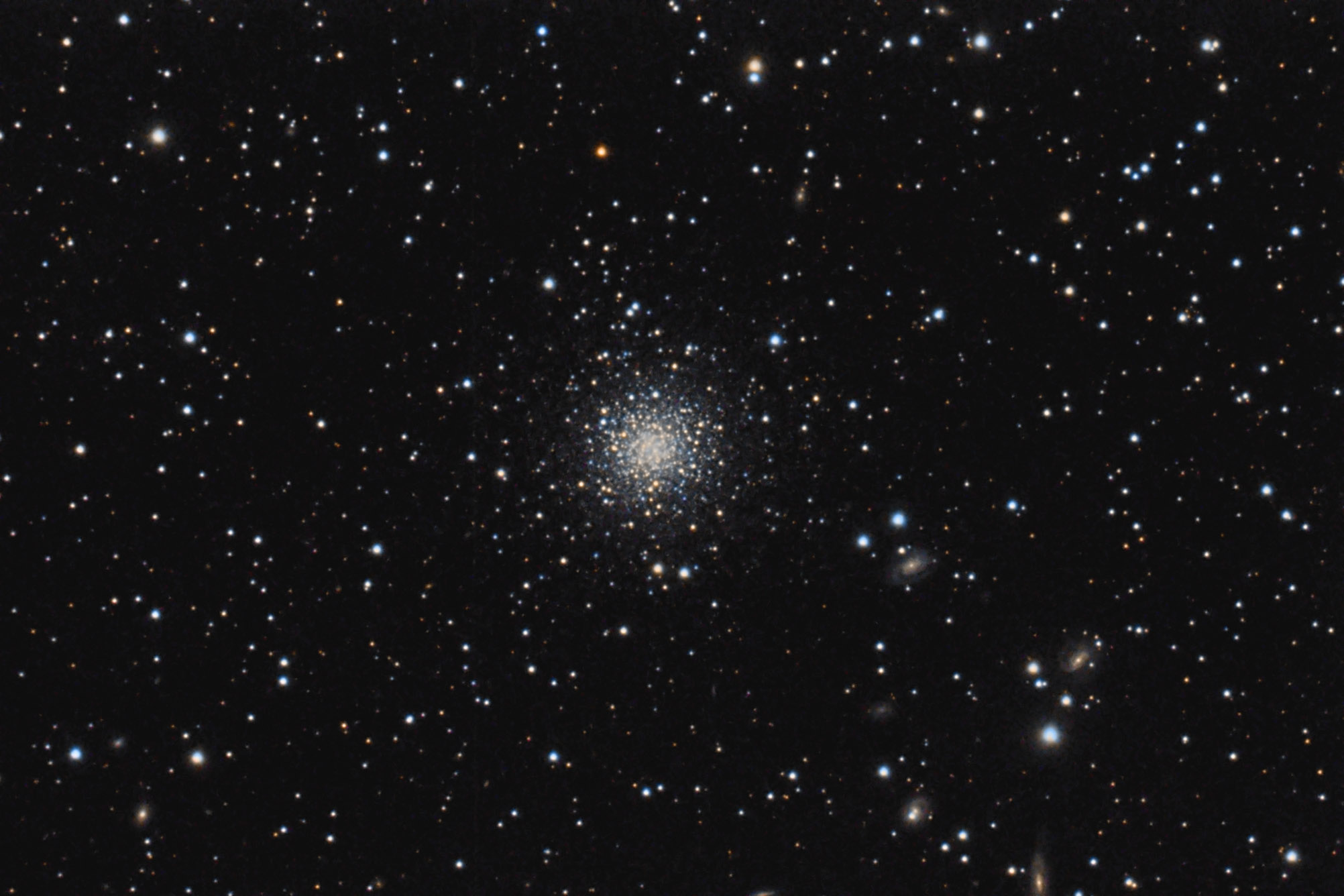Object name: NGC7006 NGC 7006 is the other globular in Delphinus is much more distant, being far beyond the normally considered radius of the galaxy's halo. It is thought to be about 125 thousand light years from the galaxy's core and over 135 thousand light years from us. Still, it is a surprisingly bright object, easily seen in a 6" scope. But at its great distance, I've never seen even a hint of resolution of any of its stars in my 10" scope. It is just a ball of light visually. Again, like NGC 6934 I imaged this one at 0.5" per pixel, but on a slightly better night. It was discovered by William Herschel on August 21, 1784. It is in the original H400 program. My log from June 14, 1985 on a fair but humid night with my 10" f/5 at up to 180x reads; "Small blobular cluster, rapidly brighter toward the core. No hint of resolution. Seems brighter than the H400 writer indicates. I've seen it easily in my 6" f/12."
It is the distant spiral galaxies that make this shot interesting. Surprisingly, to me anyway, several bright ones are not cataloged by any catalog I can find. MGC+03-53-011 is the spiral west (right) of the globular and is about 340 million light years distant. MGC+03-53-010 is the vertical spiral at the very bottom of the page and is a tad over 500 million light years away. Unfortunately, I didn't realize its full extent and left some of it out of frame. Above it and slightly to the right, just above an arc of stars is another spiral AGC 300174 and it like MGC+03-53-011 is about 340 million light-years away. They are likely members of the same group. Near the lower left corner is the rather bright elliptical galaxy MGC+03-53-012. Like MGC+03-53-10 it is just over 500 million light years away. So those two are also likely related. Another spiral, again partly cut off at the bottom of the image is 2MASX J21012393+1605343 ID. I can find no data on it. The rest of the galaxies are in no catalog I have access too.
At the top of the image just left of center is a blue star. Below it is a curving arc of fainter stars. The first one is about the same shade of blue as the first star, just fainter. Actually, it isn't a star at all. It is another quasar, QSO B2059+1604 and is listed by NED as being 10.221 billion light years away. It is blue, contrary to the oddly red one in my last post that was also at about the same distance.
14" LX200R @ f/10, L=4x10' binned 1x1, RGB=2x10' binned 2x2, STL-11000XM, Paramount ME | | 
